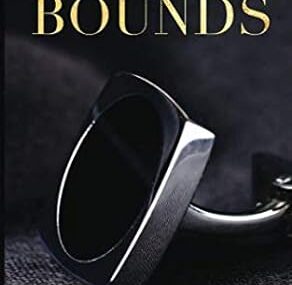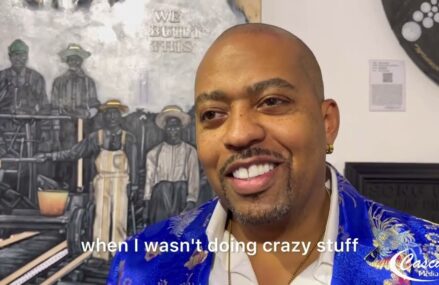Blakey was born on October 11, 1919, in Pittsburgh, Pennsylvania, probably to a single mother who died shortly after his birth; her name is often cited as Marie Roddicker (or Roddericker) although Blakey’s own 1937 marriage license shows her maiden name to have been Jackson. His biological father was Bertram Thomas Blakey, originally of Ozark, Alabama, whose family migrated northward to Pittsburgh sometime between 1900 and 1910. Blakey’s uncle, Rubi Blakey, was a popular Pittsburgh singer, choral leader, and teacher who attended Fisk University.[5]
Blakey is described as having been “raised with his siblings by a family friend who became a surrogate mother”; he “received some piano lessons at school”, and was able to spend some further time teaching himself.[6] According to Leslie Gourse’s biography, the surrogate mother figure was Annie Peron. The stories related by family and friends and Blakey himself are contradictory as to how long he spent with the Peron family, but it is clear he spent some time with them growing up.[7]:2–3
Equally clouded by contradiction are stories of Blakey’s early music career. It is agreed by several sources that by the time he was in seventh grade, Blakey was playing music full-time and had begun to take on adult responsibilities, playing the piano to earn money and learning to be a bandleader.[8][9][10][11]
He switched from piano to drums at an uncertain date in the early 1930s. An oft-quoted account of the event states that Blakey was forced at gunpoint to move from piano to drums by a club owner, to allow Erroll Garner to take over on piano.[7]:6–8[8]:1[12][13] The veracity of this story is called into question in the Gourse biography, as Blakey himself gives other accounts in addition to this one.[7]:6–8 The style Blakey assumed was “the aggressive swing style of Chick Webb, Sid Catlett, and Ray Bauduc”.[7]:8–10[10]
From 1939 to 1944, Blakey played with fellow Pittsburgh native Mary Lou Williams and toured with the Fletcher Henderson Orchestra. While sources differ on the timing, most agree that he traveled to New York with Williams in 1942 before joining Henderson a year later.[2][7]:10[9][14] (Some accounts have him joining Henderson as early as 1939. [13][15][16]) While playing in Henderson’s band, Blakey was subjected to an unprovoked attack by a white Georgia police officer which necessitated a steel plate being inserted into his head.[17][18] These injuries caused him to be declared unfit for service in World War II.[19] He led his own band at the Tic Toc Club in Boston for a short time.[2][7]:11–12[13]
From 1944 to 1947, Blakey worked with Billy Eckstine’s big band.[2] Blakey became associated with the bebop movement through this band, along with his fellow band members Miles Davis, Dexter Gordon, Fats Navarro, Dizzy Gillespie, Charlie Parker, and Sarah Vaughan among others.[8][20][21]
After the Eckstine band broke up, Blakey states that he traveled to Africa for a time: “In 1947, after the Eckstine band broke up, we—took a trip to Africa. I was supposed to stay there three months and I stayed two years because I wanted to live among the people and find out just how they lived and—about the drums especially.”[22] He stated in a 1979 interview, discussing the context of the decision at the time:
“I didn’t go to Africa to study drums – somebody wrote that – I went to Africa because there wasn’t anything else for me to do. I couldn’t get any gigs, and I had to work my way over on a boat. I went over there to study religion and philosophy. I didn’t bother with the drums, I wasn’t after that. I went over there to see what I could do about religion. When I was growing up I had no choice, I was just thrown into a church and told this is what I was going to be. I didn’t want to be their Christian. I didn’t like it. You could study politics in this country, but I didn’t have access to the religions of the world. That’s why I went to Africa. When I got back people got the idea I went there to learn about music.”
— Art Blakey quoted by Herb Nolan, DownBeat (November 1979 issue p.20)[23]
Blakey is known to have been recorded from 1947 to 1949.[24] He studied and converted to Islam during this period, taking the name Abdullah Ibn Buhaina, although he stopped being a practicing Muslim in the 1950s[1] and continued to perform under the name “Art Blakey” throughout his career.[9]
As the 1950s began, Blakey was backing musicians such as Davis, Parker, Gillespie, Bud Powell, and Thelonious Monk;[24] he is often considered to have been Monk’s most empathetic drummer,[25] and he played on both Monk’s first recording session as a leader (for Blue Note Records in 1947) and his final one (in London in 1971), as well as many in between.[24] Blakey toured with Buddy DeFranco from 1951 to 1953[2] in a band that also included Kenny Drew.[7]:25



